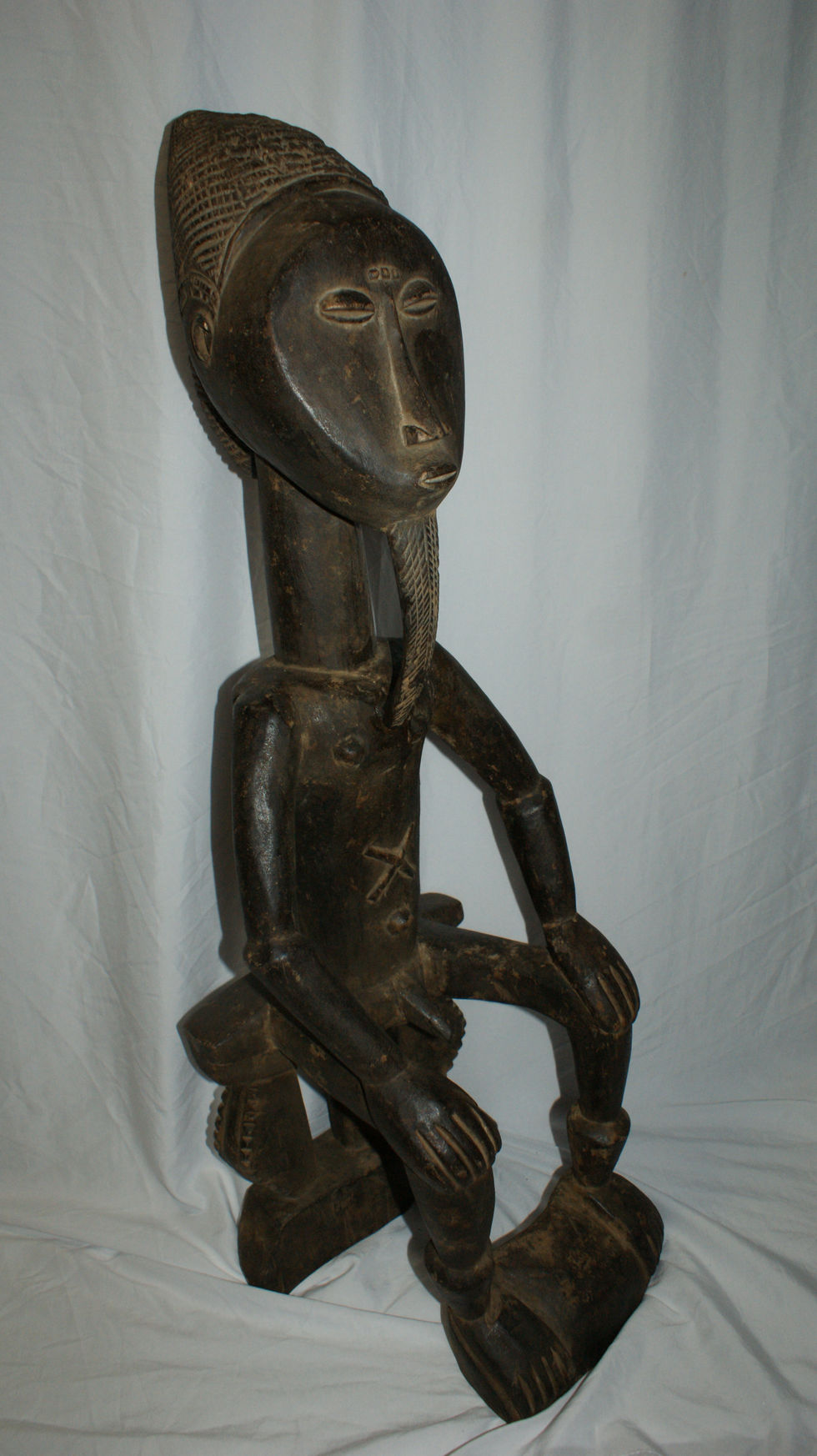W🌍RLD HISTORY
Create Your First Project
Start adding your projects to your portfolio. Click on "Manage Projects" to get started
Luba Male Court Figure
Project type
Statue
History:
Origin: As you correctly pointed out, these figures originate from the Luba people of the Democratic Republic of Congo and also areas in Zambia influenced by Luba artistic traditions.
Courtly Context: These particular figures are often associated with the Luba royal court and the significant role of women within it. They were often commissioned by or for members of the elite.
Potential Functions: These figures could have served several purposes within the courtly setting:
Memory Aids: They might have been used to recall important ancestors, historical events, or royal lineages. The details of the carving, such as scarification patterns or hairstyles, could hold specific mnemonic significance.
Spirit Receptacles: Some Luba art served as a dwelling place for spirits or as intermediaries between the living and the spiritual realm.
Prestige Objects: Their intricate carving and association with the court made them valuable objects that signified status and power.
Divination: Certain figures were used in divination practices to communicate with the spirit world and gain insight into the future or the causes of problems.
Cultural Significance:
Importance of Women: In Luba society, and particularly within the court, women held positions of influence and were seen as vital to the continuity of lineage and the transmission of cultural knowledge. These figures reflect this importance.
Royal Ideology: The figures often embody the Luba ideals of beauty, composure, and spiritual power, reinforcing the image and authority of the ruling class.
Historical Record: As potential memory aids, these figures could be seen as tangible representations of Luba history and social structures.
Artistic Excellence: Luba art is highly regarded for its sophisticated carving techniques and aesthetic refinement, and these court figures are prime examples of this artistic tradition.
Symbolism and Design:
Elaborate Hairstyle: The carefully rendered hairstyle is a hallmark of Luba art and often denotes status and identity. The specific patterns can hold symbolic meaning related to lineage or life stages.
Scarification Patterns: The incised patterns on the body, particularly on the torso and sometimes the face, are not merely decorative. They are integral to Luba aesthetics and carry cultural information about lineage, status, and beauty ideals. The "X" pattern on the chest is a common motif.
Serene Expression: The calm and composed facial features reflect the Luba emphasis on inner peace and dignity.
Seated Posture: The seated posture is common in Luba figures and can suggest contemplation, authority, or a connection to ancestral spirits.
Object Held (if any): Sometimes, these figures hold objects such as bowls or staffs, which can further clarify their specific function or symbolic meaning. In this image, the figure appears to be resting its hands on its knees.
Proportions: The often elongated neck and carefully balanced proportions contribute to the overall elegance and spiritual presence of the figure.





